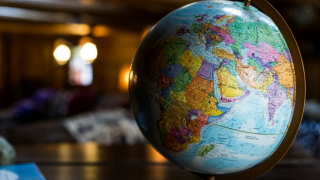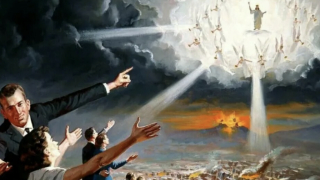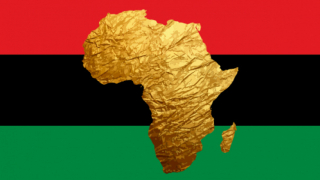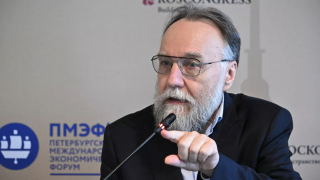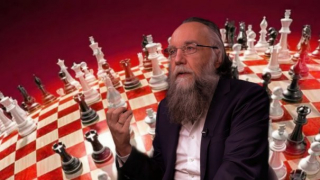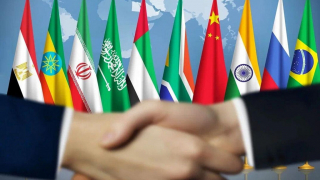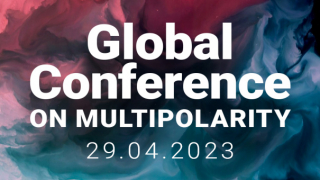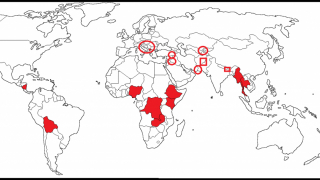BRICS will be the basis of a multipolar architecture
The end of the unipolar moment: but what comes next?
The Russian military special operation (war) in Ukraine, which began in February 2022, will be seen in history as an epochal turning point, as a milestone marking a transition between eras. Although the processes are not finalised and numerous twists and turns are possible, everything indicates that it will mark the passage from the unipolar moment to multipolarity.
But here, by multipolarity, we are still referring to something extremely diffuse, undefined. For just as the period from the Soviet collapse to the special military operation, called unipolar, tried to consolidate itself into a stable order but ended up proving to be only a moment[1], it is still to be defined if this turning point, if it occurs, will open a mere multipolar moment or will inaugurate an authentic multipolar order, stable and able to last for at least a few generations.
What would distinguish an „order“, in this sense, would be the character of stability and consensus that unipolarity never had. However much one might speak (still) of a liberal global hegemony and an American-centric unipolarity, the US has not managed to stabilise unipolarity in a new institutionality. The institutions on which unipolarity relied were remnants of the bipolar era. Moreover, it is essential to remember that there continued to be strongholds of dissent that questioned the geopolitical context it sought to impose. The very „chaotic“ dimension of liberal thought, which overflowed in its geopolitics into a „strategy of chaos“, may have collaborated to prevent the condensation of the „moment“ into „order“[2].
If, therefore, an authentic multipolar order is to be structured in the post-globalist future, it will be necessary to think in terms of institutional architecture on an international scale. The institutions of the 20th century, no matter how much one clings to them out of inertia, are not good enough. They have flagrantly demonstrated their inefficiency, which has already been denounced by Russian President Vladimir Putin when he spoke of the failure of the so-called „rules-based international order“ [3]. This slogan has turned out to be mere artifice to mask raw Atlanticist interest. The renowned and exalted international institutions are cumbersome, bureaucratic relics and, worse, vitiated from their inception by the foundational intent of pushing the world in the direction of a globalist New World Order.
G7 as dead end
An example of one such decaying international structure is the G7, Group of Seven, an international forum that would bring together the seven most developed and industrialised economies in the world. The description, provided by the IMF (another decadent and Atlanticist institution), is false in principle, since the forum has never included China, the spearhead of development and industrialism in the world today.
The group, of course, is not irrelevant, since by including the US, Canada, United Kingdom, France, Italy, Germany and Japan (with the European Union as a whole as an unaccounted member), the G7 accounts for almost 1/3 of world GDP[4] and half of total wealth [5]. The economy, however, is not the main consideration here since, including the US, the G7 has disproportionate military power and levels of soft power that are still unmatched and globally pervasive. After all, despite the contradictions and the broadening of global pockets of resistance, we still live in a „McWorld“, more so than we are usually aware.
The G7 thus occupies a privileged place among the various intergovernmental forums and institutions linked to so-called „globalism“, that is, the project of global integration according to a post-national model of global governance that would establish a cosmopolitan society on a world scale. In this direction, the G7 has served to establish guidelines and set up policy plans related to the „green agenda“, such as the Paris Agreements, energy transition, promotion of liberal-progressive agendas (gender ideology, feminism, abortionism, immigrationism, etc.)[6]. The more specifically geopolitical sphere also helps to highlight the influence of the G7, such as the constant attempts to interfere against Russia on the Ukrainian issue, meddling in Libya, Syria, etc.
In this sense, Russia’s exclusion from the ranks of the forum (hitherto called the G8) is an interesting milestone. Occurring in 2014 in response to the reunification with Crimea, this expulsion can be seen as the endpoint of Russian active attempts to come closer to and integrate with the Western world. The subsequent Minsk Agreements can best be seen as efforts to avoid open warfare, directed specifically at a Russia-Europe understanding. And yet even that last effort failed (not only that, it was revealed this year that the „European partners“ had bad intentions from the beginning!).
BRICS: humble beginnings and many missteps
By the time the eviction occurs, the BRICS had formally been in existence for 5 years. Created in 2009 by Brazil, Russia, India and China (although informal dialogues had been going on since 2006), with South Africa joining in 2010, BRICS emerged as a relatively informal coordination of countries interested in supporting each other in investment opportunities along multilateralist lines, i.e. aiming at decentralizing capitalist globalization processes in a more equitable direction[7].
The project gradually became more complex, leading to the creation of a Development Bank and a Contingency Reserve. Many other projects did not progress, however, and by 2015 certain Western media outlets were saying that the project had failed. Despite the propagandistic tone, not infrequently questioning the very existence of the group, it should be noted the informal and „loose“ nature of the arrangement created obstacles for the BRICS to reach its potential.
We can tell this from the following: the flooding of the market by US shale oil in 2014 led to the biggest drop in oil prices in history. This greatly affected all countries with economies based on commodity exports as a side effect, including Brazil, Russia and South Africa, which entered a phase of economic turmoil in this period. Meanwhile, China and India, engaged in industry-based development strategies, continued to grow. The responses to this 2014-2016 crisis were asymmetric and disparate among countries. Now, the asymmetry itself, with completely different paths and results, is an indication of the BRICS’ problems.
We understand the limitations of the initial proposal, but if a certain commercial and infrastructural coordination was intended to better distribute the opportunities and gains from globalisation, then greater integration was needed in the sphere of planning and development strategies, which would involve exchanging knowledge on successful experiences in the relevant fields. None of this happened. At the critical moment it was every country for itself.
BRICS’ resources
Nevertheless, it is necessary to reaffirm the immense potential of this project, easily perceptible by the numbers involved. With 3.2 billion inhabitants, the BRICS account for more than 40% of the world population. The bloc is also responsible for ¼ of the goods and services produced on the planet , with a joint GDP of $24 trillion[8]. When we take the issue to the industrial sphere, the BRICS are responsible for 1/3 of manufactured goods and also 1/3 of agricultural production, with more than half of the world’s agricultural GDP being generated by BRICS countries. In fact, increasingly, the BRICS will feed the world[9].
As far as planetary resource reserves are concerned, we are referring altogether to 1/3 of drinking water reserves, 8% of oil reserves, 27% of natural gas reserves, 21% of uranium reserves, 73% of rare earth reserves, and immense reserves of gold, silver, niobium, lithium, iron, vanadium, nickel, bauxite, tungsten, copper, etc[10].
But economics isn’t the major point. We should also highlight the military sphere, in which China’s military is accelerating its modernisation, especially its Navy. Russia’s Armed Forces, engaged in the greatest conflict since World War II, are taking advantage of the opportunity and the learning curve of concrete reality to learn about Western military apparatuses and develop appropriate responses to them. Let us also remember that of the BRICS, three members (Russia, China and India) are nuclear powers. Brazil and South Africa were pressured to abandon their military nuclear programmes in the transition from bipolarity to unipolarity[11], but they still hold sufficient technology and technical knowledge, waiting only for a greater relaxing of the Non-Proliferation Treaty (or sufficiently sovereign and bold governments), which seems inevitable in an era of conflicts and tensions.
The point where we see the BRICS‘ greatest weakness is in soft power. In this field, the BRICS nations remain on the defensive, albeit with modest initiatives and purely spontaneous manifestations of soft power. The BRICS have nothing to compare to the immense, trained and financed network of NGOs, foundations, institutes and think tanks at the disposal of the West, which acts to keep its own populations passive and subvert other civilizations. The tentacles of the McWorld, with its LGBTQ+ militantism and other exotic agendas, is felt even at the heart of the bloc’s countries, with Brazil the weakest in this regard and China the most resistant.
Nevertheless, despite difficulties and failures, BRICS represent rising possibilities, while the G7 (and partners) present the face of decay: From the opioid crisis in the US to the demographic replacement seen in some European countries, many of the G7 countries dance on the edge of the abyss. They all see their political systems thrown into disrepute, with their societies polarised and populist and sovereigntist alternatives posing threats with revolutionary potential.
Breakaway, not reform: for a new multipolar global architecture
Well, returning to recent events, for BRICS the sanctions directed by the Collective West against Russia were providential. They were the stimulus and motivation the project needed to reactivate itself. Often, the lack of options narrows the field of vision, freeing a people from the labyrinths of uncertainty and timid attempts to get along with everyone at once. The doors of various international organisations and international financial resources and instruments have been closed to Russia. The beginning of the Russian special military operation in Ukraine (the public face of an authentic war against the Atlanticist West) accelerated the wheel of history.
Russia spent years, even under Putin, trying to integrate itself into the One World promoted by globalist intellectuals. Russia was only asking for a certain degree of respect for certain Russian specificities, as well as a more equal distribution of voice and power on the international stage. It should be recalled that even NATO Russia tried to join at the beginning of the 21st century. It is part of Putin’s duality and Russia itself as an archeomodern country. These inconsistencies and duplicities went far beyond what was tolerable even for the patriots and traditionalists most sympathetic to the possibilities of Putinism and were what allowed Putin to be fooled by the trickery of the Minsk Accords. All that, however, seems to be over.
If Putin initially advocated a purely multilateralist and even Westernist line, which shifted to soft multipolarism over most of the last 20 years, today the multipolar line in the strict sense seems to have been fixed beyond doubt. Numerous official government statements affirm Russia as the heart of a particular Slavo-Orthodox-Eurasian civilisation and that after the collapse of the unipolar „G7“ world a new multipolar global architecture must be built, as a kind of Concert of Civilisations.
The threat posed by the West, including unprecedented levels of widespread Russophobia, has led the entire Russian people to understand themselves to be at existential risk. The existential threat, throwing the Russian communally into a situation of Being-toward-Death forced them into a sovereign decision, a self-assertion. Russia, then, begins to seek alternatives to break the siege, such as alternatives to the SWIFT system, to Western suppliers of goods and services, to Western technologies, etc., finding these alternatives especially with its BRICS partners, mostly China and India.
China itself, supposedly eager initially for a quick end to the conflict and the brief normalisation of international relations, seems to have accelerated its multipolarist awareness with Nancy Pelosi’s fateful visit to Taiwan. From then on, and especially after the confirmation of Xi Jinping’s continued leadership, China began to work for a profound revolution in the international architecture. India is more discreet, but has also increased its commercial and strategic ties with BRICS partners, despite Atlanticist overtures[12].
In parallel, contrary to the narrative of „international isolation“, numerous countries have asked to join the BRICS, most notably Iran, Argentina, Indonesia and others. The BRICS are more alive than ever.
What this may mean in concrete cases we will only know after the end of the special military operation. But a consequent multipolarist line requires the extinction of most of the current international structures, with their replacement by others more capable of reflecting the pluriversality of the human species. In this role, the BRICS appear as the skeleton of this new world architecture, able to inaugurate a new historical era.
Notes:
[1] On why the collapse of the Soviet Union inaugurated a “multipolar moment” and not an “order”, see Alexander Dugin, Teoria do Mundo Multipolar (Caxias do Sul: ARS REGIA, 2022); and also Charles Krauthammer, “The Unipolar Moment” // Foreign Affairs. 1990 /1991 Winter. Vol. 70.
№ 1. С. 23–33.
[2] Teoria do Mundo Multipolar, Ibid. See also: Alexander Dugin, “Uma Breve História do Caos. Da Grécia à Pós-Modernidade. Parte 2”, em Nova Resistência, dezembro de 2022. URL: https://novaresistencia.org/2022/12/19/uma-breve-historia-do-caos-da-grecia-a-pos-modernidade-parte-2/ (Acessado em 21/01/2023)
[3] See Vladimir Putin’s speech at the 19th meeting of the Valdai International Discussion Club, October 27, 2022. URL: http://en.kremlin.ru/events/president/transcripts/69695 (Acessado em 21/01/22).
[4] Data extracted from Statista. URL: https://www.statista.com/statistics/722962/g20-share-of-global-gdp/ (Acessado em 21/01/22).
[5] Data from “Global Wealth Databook 2021”, from Credit Suisse, 2021.
[6] See, for example, “Focus 2030” URL: https://focus2030.org/Focus-on-the-G7 (Acessado em 21/01/22).
[7] We need to insist on this point and pay attention to the theoretical distinction between Multilateralism and Multipolarism, specially because the lack of ideological rigour among politicians and most diplomats will make them use one word when they mean the other. Multilateralism is the idea of a non-Americanocentric Globalism where non-Western nation have more say on building the same Cosmopolitan “End of History” project, while Multipolarism is the rejection of Globalism as such, proposing a World Order structured along civilizational lines where in each civilization we find a pole with its own values, spirituality, ethics, economics, political forms, etc. For more on this, see Theory of the Multipolar World, Ibid.
[8] Zhao Zhongxiu and Lan Qingxin, “Promoting BRICS Cooperation for Economic Growth and Development” in Revista Tempo do Mundo, n. 22, April 2020.
[9] Maria Printseva, “Can BRICS Feed the World” in BRICS Business Magazine n. 1 (27) 2021. URL: https://www.bricsmagazine.com/en/articles/can-brics-feed-the-world (Acessado em 21/01/23).
[10] P.E.J. Pitfield, T.J. Brown & N.E. Idoine, “Mineral Information and Statistics for the BRIC countries 1999-2008”, British Geological Survey. URL: https://nora.nerc.ac.uk/id/eprint/11019/1/BRIC_report_FINAL.pdf (Acessado em 21/01/23)
[11] It’s public information that Brazil is one of the countries that has complete knowledge of the nuclear fuel cycle, but few people remember that in the 70s and 80s Brazil had a secret nuclear weapons program in cooperation with Argentina. The end of the military period, though, led to the abandonment of the program in 1990. As for South Africa it remains today the only country to have built nuclear weapons and then dismantled them altogether in 1989 during the negotiations to end the apartheid system and, therefore, to end the sanctions against their country.
[12] The 20th National Congress of the Communist Party of China in October 2020 gave Xi Jinping a new term of leadership confirming his course, which contrasts with Jiang Zemin and Hu Jintao leaderships, since these were more conciliatory with the West. Since then, China has ramped up its economic siege against Taiwan and organized constant military drills. Military reports also indicate that China is now actively collaborating with military supplies for Russia. As for India, it’s acting as the “middle man” in Russia’s continued oil exports to some European countries. At the same time, India has helped establish a new geoeconomical hub with Iran and Russia through the International North-South Transport Corridor. Both countries, naturally, have rejected pressures to sanction and isolate Russia.
Source: https://gegenstrom.org



